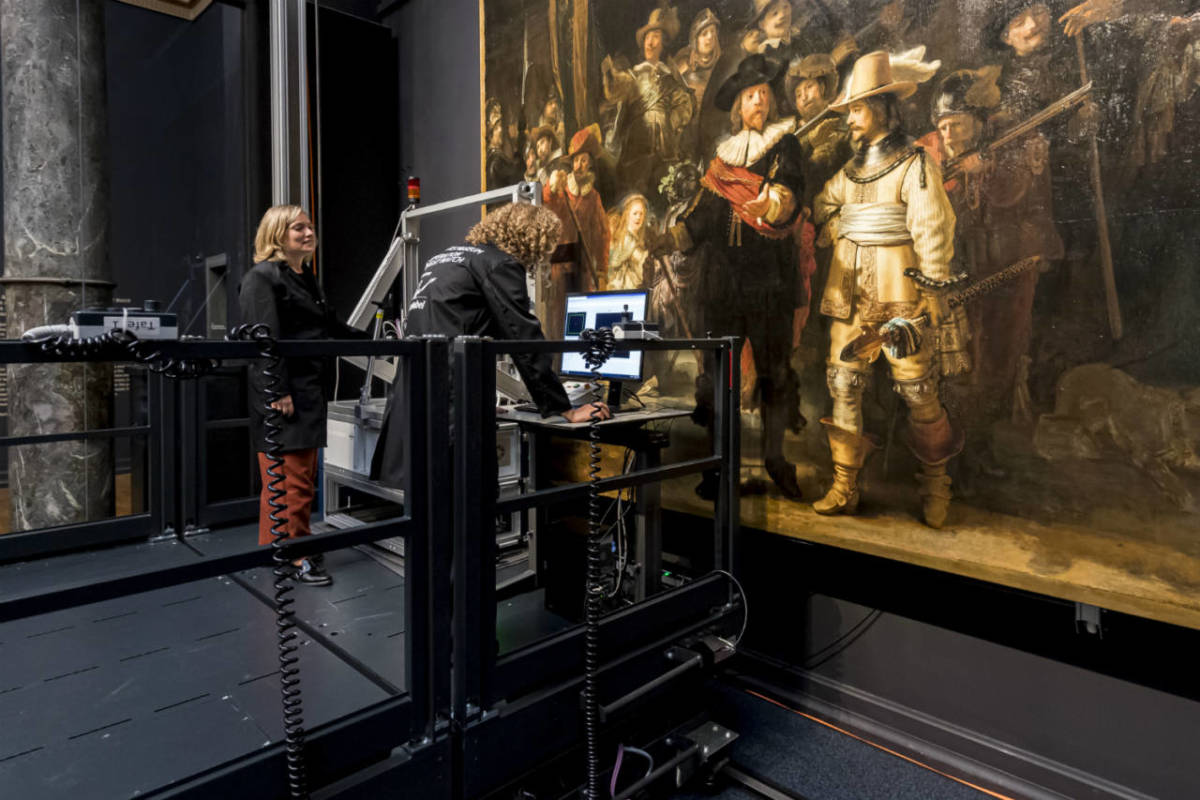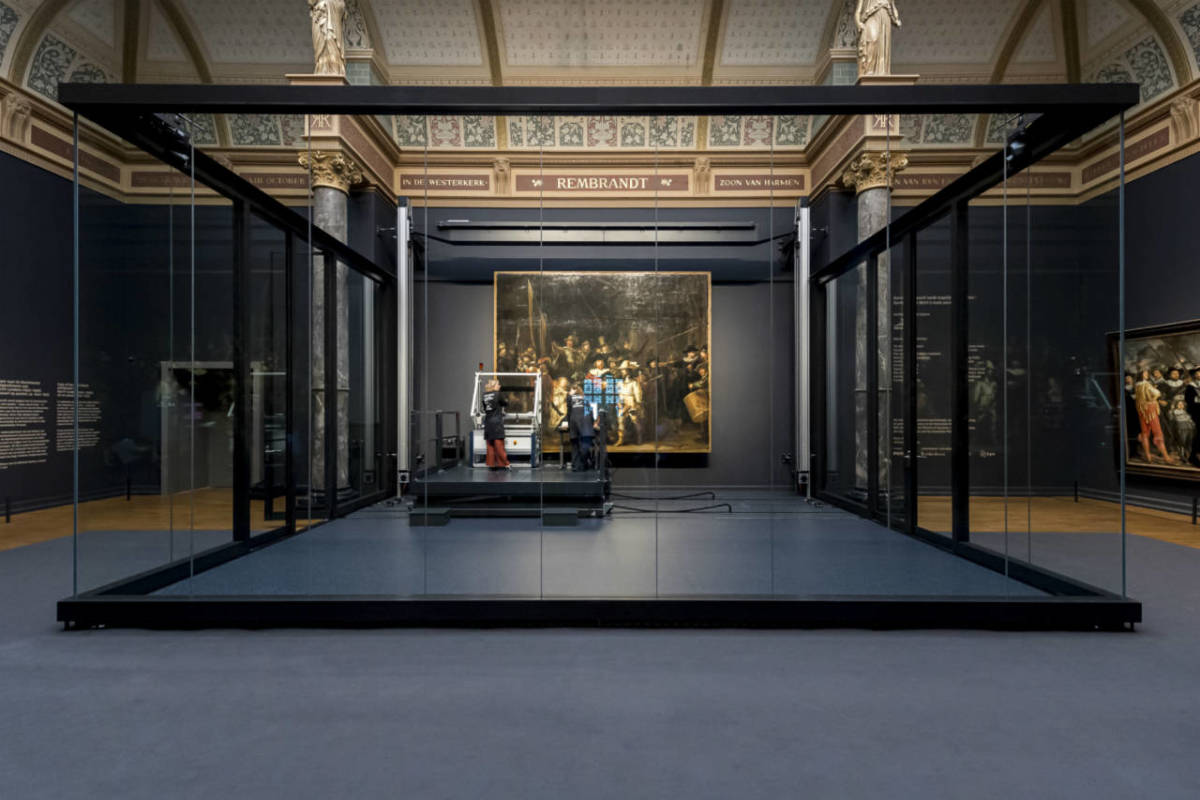Who’s watching the Night Watch? Year-long restoration begins under public gaze


The most famous painting in Amsterdam’s Rijksmuseum, Rembrandt’s Night Watch, is beginning a year-long examination and restoration that will take place in full view of the public.
Operation Night Watch is the most extensive study ever to be carried out into the painting and will yield clues about both its original and current state. Experts want to see how the effect of centuries of public display and the 25 previous restorations have affected the work.
A team of 20 researchers will work on the painting inside a glass box so that visitors can watch the project unfold. A web page has been set up at rijksmuseum.nl/nightwatch so people can follow the restoration online.
The museum’s head of science, Katrien Keune, is co-ordinating the team of scientists, conservators, restorers and photographers. She told NOS the aim was to create the most thorough database of information about the Night Watch that was possible with today’s technology.
‘[Things like] what types of paint Rembrandt used and why,’ she told NOS. ‘We’re also looking at how the paint has changed. For example, take the little dog, which is covered in a white haze. That wasn’t done by Rembrandt. So we want to know where it comes from and what has happened to the paint.’
Known since the 18th century as the Night Watch, Rembrandt’s portrait of the company of Captain Frans Banninck Cocq and Lieutenant Willem van Ruytenburch is his largest and regarded as his most ambitious work. It is Rembrandt’s only painting in the singularly Dutch militia group portrait genre.
X-ray fluorescent scans
The painting is being removed from its frame and placed on an easel during the investigation phase. Photographers will take 12,500 high-resolution images of the painting, zooming on areas as small as 5 micrometres, to study pigment granules that are invisible to the naked eye.
Macro X-ray fluorescence scans will be taken to identify chemical elements in the pain such as calcium, iron, potassium and cobalt, which will also reveal how the paint has changed over time. Each of the 56 scans will take 24 hours to complete.
After the examination is complete, the restoration of the painting will begin, with the aim of imitating as closely as possible to its original condition in 1642.
‘We know that the Night Watch has had more than 25 restorations and we think that among other things, the painting has become darker as a result. That’s another think we want to investigate further,’ said Keune.
‘It’s not possible to revert to the original. A number of processes occur in the course of ageing, but we want to return as far as we can to the original painting.’

Thank you for donating to DutchNews.nl.
We could not provide the Dutch News service, and keep it free of charge, without the generous support of our readers. Your donations allow us to report on issues you tell us matter, and provide you with a summary of the most important Dutch news each day.
Make a donation